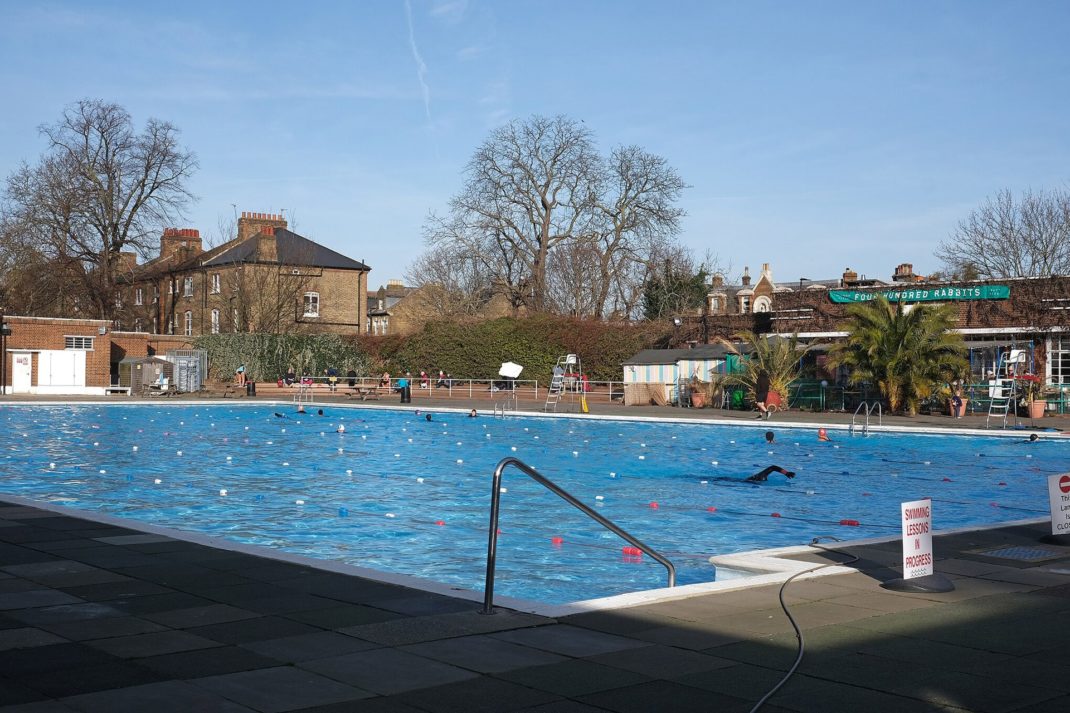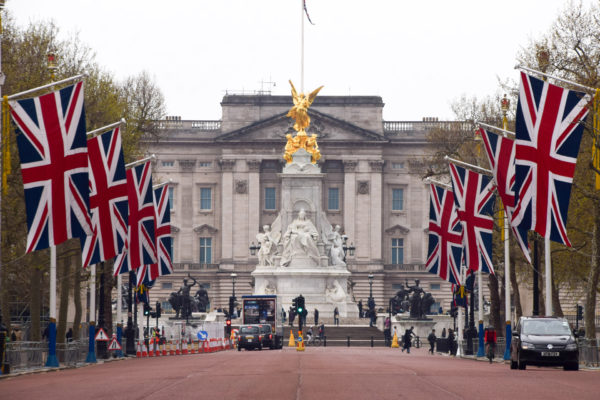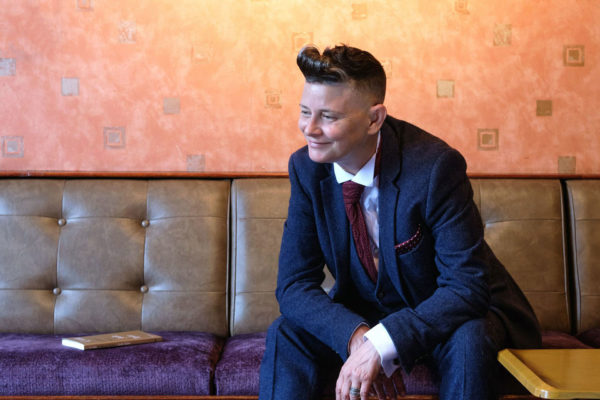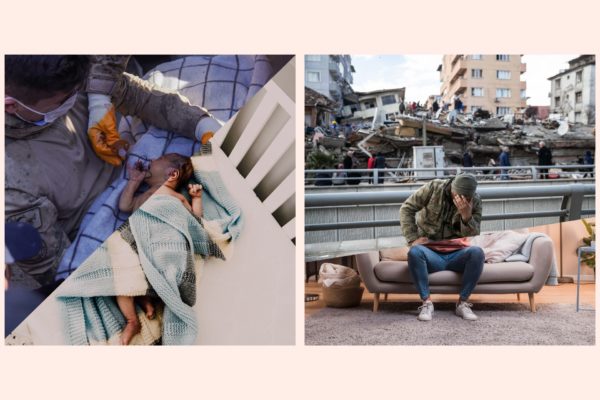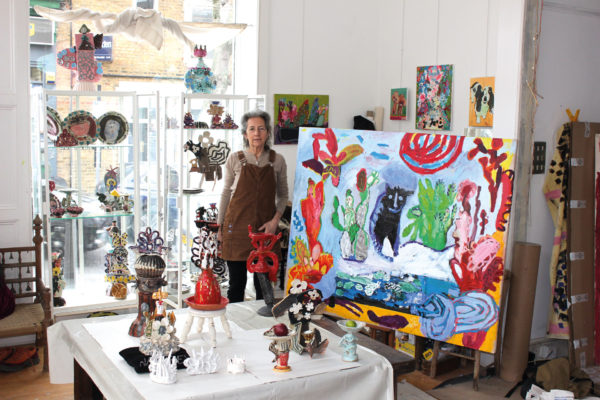Gilbert & George On Democratising Art And King Charles III – Interview
By
2 years ago
Their new centre is opening and the subversive art duo have a lot to say

With the opening of their new centre, artists Gilbert & George discuss the privilege of freedom, the democratisation of art and being fans of the new King Charles with Maryam Eisler.
Exclusive Interview: Gilbert & George
Legacy Building & The New Centre
ME: Here we are today in celebration of your soon-to-be-launched foundation, The Gilbert & George Centre [which launched post interview on 1 April]. Tell me about your legacy.
G&G: We don’t think about it. We think more and more about the power of culture. In the Western world, there was a triumph, in that you can go anywhere, stop a complete stranger on the street, and say, ‘Charles Dickens’, and whether they’ve read the book or not, they will recognise the name. ‘Vincent van Gogh’ is the same. It doesn’t matter whether they’ve seen the painting or not. And that’s what makes us safe and free. Not the policeman, not the priest, but the cultivated West. We’re all spoiled brats here. Being free is not everywhere in the world, only in some territories.
ME: And don’t we, here in the West, take safety and freedom for granted?
G&G: Yes. It’s an enormous privilege that has been fought for, on our behalf, with strain, blood and tears.
ME: Talk to me about this area of East London where you live and work.
G&G: We always believe in the past, the present and the future, all rolled into one. That’s our world. We’re living on a French Huguenot street [Fournier Street] in the middle of London. It’s built on a Roman cemetery. The next street is called Wilkes Street, named after the first man to have had the idea of free press. He had it right. And we artists have chosen to express ourselves with our art, right here, while we are alive.
ME: To express yourselves, yes. But surely, also to have a dialogue with all who surround you?
G&G: Yes. It’s the art that attracts the people. We want a reaction in front of all our pictures. We want the viewer to think and to feel different… I’m glad we were able to make our art visually so powerful.
ME: You’re looking for that punch in the gut, through image and word?
Art That Speaks To The Viewer – Whoever They Are
G&G: We always wanted to create an art that didn’t eliminate 80 percent of the world’s population, which a lot of other art does. We want our pictures to speak to whatever the viewer’s educational background or nationality may be. We want our art to have that human message.
ME: …and the observer takes what they wish to from the experience?
G&G: Yes. We want viewers to find themselves. On the simplest level, if you buy a crime book, you can side with either the police or the robbers. It needs to be that simple.
ME: The fact that you are setting up this wonderful centre and that it is free for all is indeed very important. It’s about democratisation of art and offering accessibility to all.
G&G: After all, that’s what we have been doing now for 55 years. It’s been a long journey, and they told us, ‘You will never last’!
ME: So what do you tell ‘them’ now?
G&G: We don’t tell ‘them’ anything. They’re all dead and we’re still here!
ME: Hence my question about legacy; you said you don’t really care about it, but in a sense, through this foundation, you are creating a lasting legacy.
G&G: You are right. We also have all these ‘difficult’ pictures that many institutions are afraid to show and collectors afraid to buy. But they belong to us. So, this is where we want to show them.
We equally realise, more and more, that the world was an entirely different place when we emerged as baby artists in the 60s. And, we’d like to think that we played a small part in that change. The one thing that everyone, all over the world, would agree with, is that there is always room for improvement.
ME: That may be so. Yet, I would argue that you both have somewhat remained in tact and intent in the way that you dialogue with the world, in that everything you say is based on truth and honesty. You say it as it is, without necessarily taking into account what the world or the art world would like you to say.
G&G: A lot of journalists think that we reflect life or show life. And we say: ‘No, we want to form our tomorrows, and we want our tomorrow to be a little bit different. And this, because people saw those pictures or saw our exhibition. If we speak the truth, that’s important. It’s about ‘Truth, Beauty, Power’ [Christopher Dresser’s motto].
ME: What about religion?
G&G: We are more involved with religion than many of our contemporaries, because a lot of artists felt that religion was something that was finished and dead. That they were too sophisticated and didn’t need to bother with it. The fact is that we feel we should bother with it, because it is an enormous subject in the world. As we speak, there are people lying in hospitals with bullets in their heads, waiting to see whether they’re going to recover or not, and all this because of religion. Ban religion, we say. Religion always invented these fake moralities for thousands of years, in order to empower itself. We believe in human morality but not one which has been imposed by fake gods.
It’s like the day when we were sitting in the front room of the house. And we heard a feeble knock. We opened the door and there was an elderly clergyman. And he said, ‘I’m sorry to trouble you, gentlemen. I couldn’t resist knocking on your door.’ He said, ‘I just saw that thing you did called “Ban Religion” and I think it is marvellous’. And we said, ‘Okay, perhaps you can explain why you felt that way.’ He said, ‘I’m getting on in years now, and I still have my congregation at the church every Sunday. They’re all very nice people. Most of them are friends of mine. And they’re all very religious, but I didn’t really ever want them to be religious. I just wanted them to be good.’
On The New King
ME: Two big events are about to happen [or have just happened] in the near future. One is the opening of your foundation, and the other is The Coronation.
G&G: Yes! King Charles! He is our favourite royal, because he has been more engaged in real subjects than any other royal, especially when compared to politicians who often have the wrong motives. We also felt we should do something for the King [hand-painted banners] as most people in the art world do not like the monarchy. The monarchy is a great institution.
ME: What themes are you exploring with your upcoming exhibitions?
G&G: We will have ‘The Corpsing Pictures’ at White Cube in London in April, and ‘The Paradisical Pictures’ for the opening of the foundation. We are also doing a show in New York at Lehmann Maupin and another show in West Palm Beach with White Cube.
ME: What about these ‘The Paradisical Pictures’? What are they about?
Gilbert: When thinking of the ‘The Paradisical Pictures’, we say most people see paradise as the after-party. And we are using it in reverse. We’re starting with paradise here on earth, so we call it the pre-cum party!
ME: Is there a paradise on earth?
Gilbert: I think there is. I think we found paradise right here, don’t you think George?
George: It’s not about paradise; it’s about what people are thinking and feeling about that subject. The exhibition is for people who believe in the afterlife but also for people who don’t believe in it at all.
All These Bones: Underlying Thoughts On The Corpsing Pictures
ME: Tell me about your underlying thoughts regarding ‘The Corpsing Pictures’. All these bones!
G&G: It’s an extraordinary field of interest because ‘The Corpsing Pictures’ have two meanings. One is a theatrical term, when somebody loses their speech, but also used by young people. ‘Corpsing’ means dead bodies. The reality is that if you go very early in the morning to walk through London, you will see foxes walking into the city from the country to find bones. How long does it take that fox to walk in from Essex? And then an hour later, the skies are filled with sea birds, gulls… How long does it take them to fly in from the coast? And they too are looking for bones. It’s extraordinary, isn’t it!
ME: There must also be, of course, the idea of life and death, existential anguish, the human condition. Would you agree?
G&G: Yes. To see the bones. To confront them. Even George said, he chipped his bone! Did you chip your bone, George? [said with a laugh.]
ME: You have taken a conscious decision to simplify this series with two colours only, gold and red.
G&G: We started creating the pictures and the pictures wouldn’t let us bring any other colours in. It was very simple. The golden soles of the shoes… We liked the golden shoe because of the legend of Dick Whittington. The legend has it that he walked into London because he heard that the streets were paved with gold. And, of course, he arrived and soon found out that they weren’t paved with gold at all. But he, from his own effort, went on to become Lord Mayor of London. That’s how it should work.
ME: You have also used a lot of rope, strings and chains in this series. Is this because we all are prisoners of our existence?
G&G: It’s because we all have ties. We are all connected.
ME: Talk to me about the new book, The Meaning of the Earth, by Wolf Jahn that is about to be published.
G&G: It’s very good. Chapter one is called ‘Meditation on Three Words’. And the three words are, ‘Fuck The Teachers’. It’s the part of oneself that we all have to overcome, in order to go forward morally, intellectually, and education-wise. And that chapter deals with that issue in a very good way.
AI And Cultural Evolution According To Gilbert & George
ME: Speaking of education, what are your thoughts about AI and it replacing traditional education?
G&G: Everyone is talking about it. But we are not going to be here to see what happens when ‘they’ come. Maybe they’re here already and we are just not able to see ‘them’.
ME: Can you share your thoughts on our current ‘woke’ culture?
G&G: Oh, it’s fine. They do whatever they want. We do whatever we want.
ME: You have even been criticised of setting up your own exhibition space because you want to say things your way and not fall into the trap of having to tick art world ‘requirement’ boxes?
G&G: It would be more correct to say we did it this way because we want to live forever, like everybody else. We do things how we want it. We say there’s the Tate. There’s the National Gallery. There’s the British Museum, the Imperial War Museum… and then, there’s this place.
ME: How did you find it and how much did it cost you to build it?
G&G: It cost us altogether £11 million: £5 million spent on buying it and £6 million doing it. It was a rundown brewery and a lady who used to design fabrics lived here. When she died, we bought it. Can you believe… We looked everywhere, for years, and then one day we found it right in front of our door. For us, this place is perfect. Not so big and not so small. And we’re in the heart of Brick Lane. What else can you ask for!

A previously rundown brewery… This is now the site of the new centre
ME: On a final note, I am intrigued by the story behind the two solitary trees in the courtyard of your foundation – perhaps a reflection on you both?
G&G: One is a Himalayan Magnolia tree [on the left] and the other is a Ginkgo tree.
We first saw the Himalayan Magnolia tree at a museum in Tasmania with a man from the museum named Ron. He was half Syrian, half Scottish. We liked it so much, we bought one. Last week, we thought, let’s take a photograph and send it to Ron. Our message to him cross-coincided with his death. How extraordinary! Once they bloom, these flowers look like human hearts…
The Ginkgo tree we first saw when in New York, and we’d never seen one before.
We collected a lot of their leaves and pressed them in the pages of the hotel telephone directory. And then, being idiot Protestant Christians, we thought, we can’t steal their telephone directory. So we bought some adult magazines and put them inside, all the while thinking, ‘Will they catch us for the adult magazines?’… We had these in our case. Next thing you know, we saw Ginkgo leaves on our [London] street. And thought, how could they have come out of this case? That’s when we actually realised that there have been Ginkgo trees in this district forever! It’s all to do with context.







